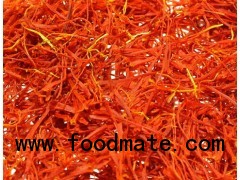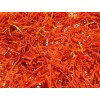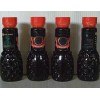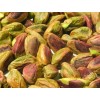Saffron:
Pushal Negin Saffron: Pushal Sargol is a hybrid that produces saffron which is longer and thicker than common saffron.
Rating: 5.0
Saffron
The history of saffron
Research and documentation show that the foothills of the Zagros Mountains in Iran are the native lands of saffron. The oldest records about the usage of saffron come from the period referred to as the Achaemenid era where all of the food products that were used in the palace kitchen in that time are inscribed on a pillar. According to these inscriptions, one kilogram of saffron was used each day in the palace kitchen.
The botany and composition of saffron
The scientific name for saffron is crocus sativus. It is both a bulbous and herbal plant. The lifespan of the saffron plant is 7 to 10 years. The brown bulb of the saffron plant belongs to the corm family. Each bulb grows into 6 to 9 thin, herbal leaves. In the autumn, one or two pink or purple colored flowers bloom from each corm. The pistil of the saffron flower is in the center and contains the ovary and the thin, yellow style growing inside. Saffron flowers have bright, red stigmas that are 20 to 30 mm in length. The stigma is the edible and commercial part of saffron. The stigma has many chemical components, such as:
carbohydrates, minerals, vitamins, pigment (especially crocin), essence (especially safranal) and flavorings (especially picrocin).
The Uses of Saffron
Saffron is used as a spice in many culinary products:
Food products such as margarine, sausages, cake powder, and many desserts.
Dairy products such as butter and cheese.
Saffron is also used in other products such as sweets, candy, ice cream, jelly, beverages, wine, chicken, rice, seafood, soup, bread, and cake.
The primary users of saffron
Arabs use saffron for preparing a kind of tea named after it and Arabic coffee.
Indians use saffron for the preparation of a dish called Biryani.
Italians and the Swiss use saffron for the preparation of a dish with rice called Risotto.
Spaniards use saffron for the preparation of a dish called Paella.
Germans and the English use saffron for the preparation of saffron cake.
Other applications for saffron
Due to its other properties, Saffron can also be used for medical purposes such as:
• Helps with digestion; strengthens the stomach and is anti-tympanites.
• Rouses sexual desire
• Is analgesic, especially for colicky pains and combats gingivitis
• Helps to fight tumors and collections of free radicals (thus reacting against cancerous cells).










